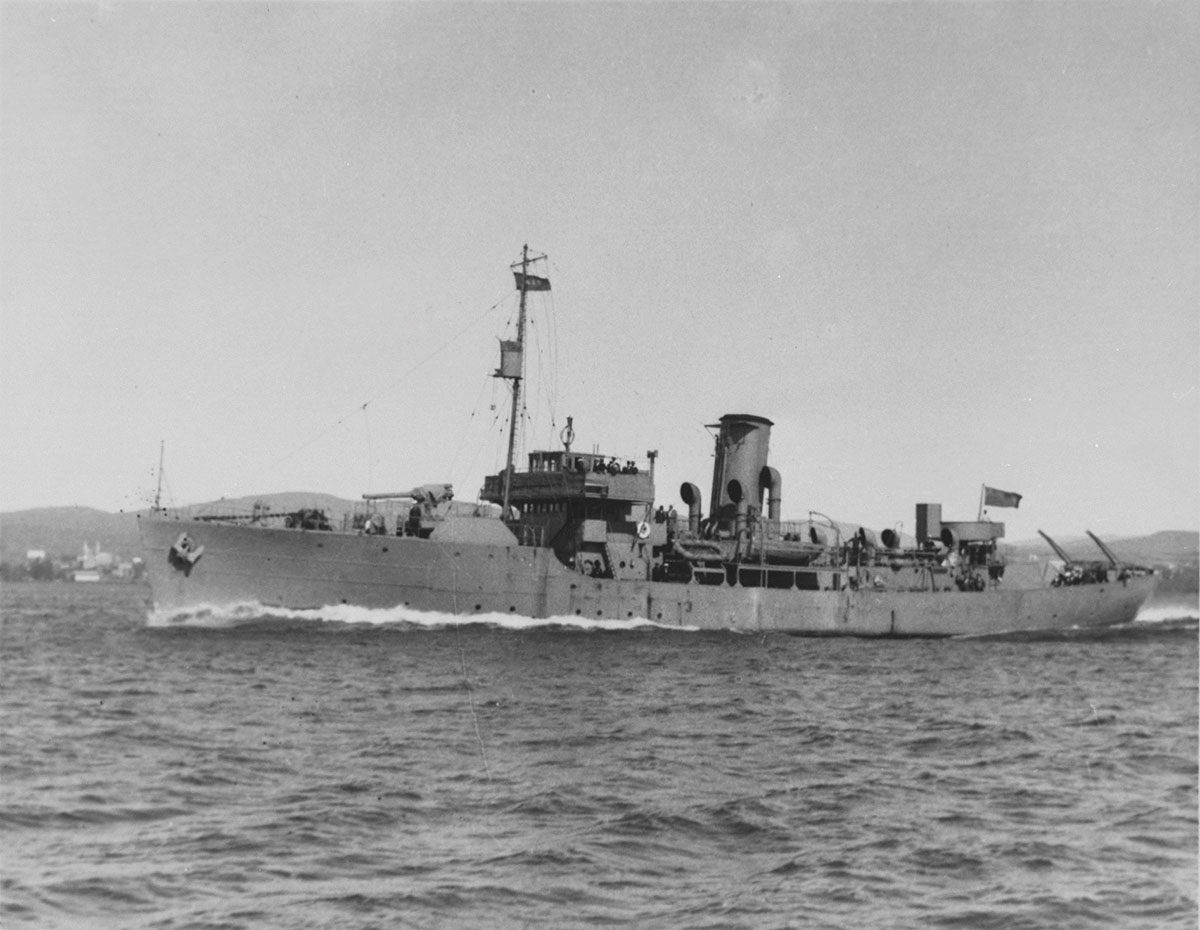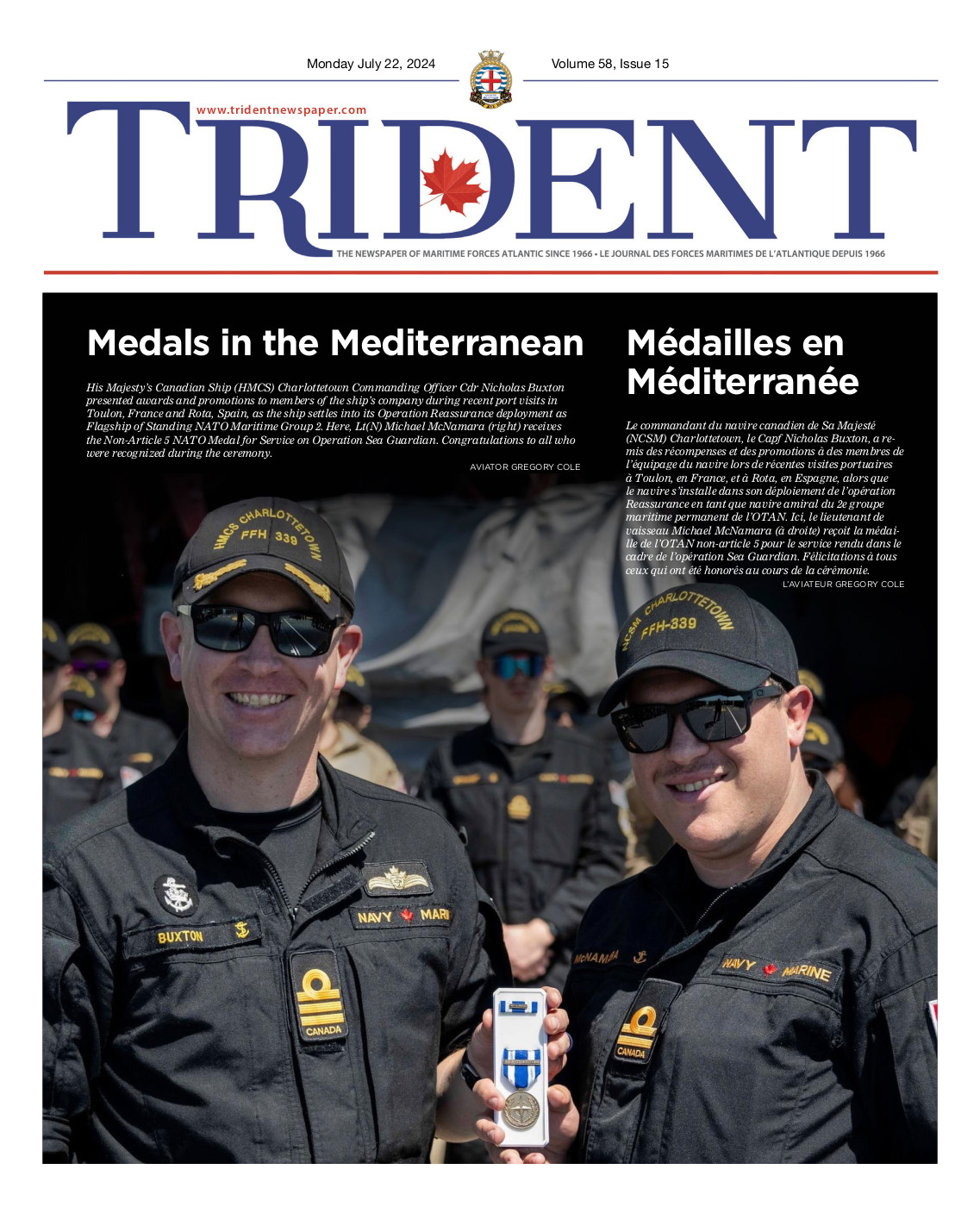
UNIVERSITY OF CALGARY
Key events of the Battle of the Atlantic: November
By CPO1 (ret’d) Pat Devenish,
Canadian Naval Memorial Trust
November 6, 1940 – HMCS Ottawa in consort with HMS Harvester operating off Ireland sink the Italian submarine Faa di Bruno. Initially attacked on the surface by gunfire from both vessels, the submarine dove and over five hours, nine separate attacks utilizing over 80 depth charges were made by Ottawa and Harvester. Though no evidence confirmed a sinking, both Captains were confident of success and left the area to rejoin in their escort duties. Recent investigations of wartime records confirm the sinking by the Admiralty though the Italian navy still considers the submarine “…lost on an undefined date between 31 October 1940 and 5 January 1941…” This is the first sinking of an enemy submarine by Canadian naval forces.
November 27, 1940 – Not by enemy forces but by Mother Nature’s awesome power in the form of a North Atlantic gale is the Canadian merchantman Lisieux lost along with 12 of her 29 crew.
November 25, 1941 – The Canadian collier Proteus with a crew of 58 is lost in the Caribbean Sea for no apparent reason. Postwar record searches in the U-boat archives indicate no submarine in this area in this timeframe. Interestingly, of the four ships of the class; Proteus, Cyclops, Nereus and finally Jupiter, Jupiter is converted into the very first US aircraft carrier USS Langley. As a footnote, sister ships Cyclops and Nereus disappeared in the First World War and Second World War respectively, also in a similar area with at least one theory claiming the ships were taken by the Bermuda Triangle.
November 2, 1942 – Laying at anchor off Bell Island, Newfoundland awaiting a convoy, the Canadian merchantman Rose Castle is torpedoed and sunk by U-518 early in the morning. Two torpedoes struck the ore carrier and of a crew of 43, just 15 survive. Just 10 days prior, Rose Castle had been the target of another submarine, U-69, but when she fired her last torpedo, it turned out to be a dud and Castle Rose survived only to be lost days later.
November 3, 1942 – In the early morning hours, the Canadian merchantman Chr. J. Kampmann in Convoy TAG-18 was struck by two stern fired torpedoes from U-160 and is sunk northwest of Grenada in the southern Caribbean with a loss of 19 of her 27 crew. The eight crew are picked up by the destroyer USS Lea.
November 8, 1942 – Five RCN corvettes; HMC Ships Louisburg, Prescott, Woodstock, Weyburn et Lunenburg along with HMS Nasturtium comprise part of the initial support for the landings of Allied troops at Vichy-French held Algiers, Oran and Casablanca commencing Operation TORCH. The RCN would provide landing craft and more corvettes over the course of the next few days and weeks as convoys sailed from England to supply the new front. It would be the end of March 1943 before the last of 17 Canadian corvettes would leave the Mediterranean for the UK to rejoin EGs within the Mid Ocean Escort Force. So began a bitter six-month campaign which would see the surrender of a quarter million German and Italian troops in Tunisia and eventually the Axis’ final defeat in Africa.
November 12, 1942 – Just after midnight and into the 13th, in the icy waters off Massachusetts Bay, the Canadian fishing schooner Lillian E. Kerr is stricken and sunk in a collision with Alcoa Pilot, a ship in a small convoy that had recently departed Halifax. Just one crew member survived and was picked up by the MV Cyrus Field only to later succumb to exposure.
November 3, 1943 – The 12,000 ton US freighter Volunteer, loaded with ammunition and magnesium wallows in Bedford Basin inland of Halifax harbour with a rapidly spreading fire aboard. Fear of a repeat explosion of 1917 when 2,000 people are killed heighten the efforts of those involved in extinguishing the fire. Although the fire spreads to a hold containing small arms ammunition, disaster is thwarted by nothing less than shear bravery and courage on the part of the naval fire party and tug crews. With fires burning and ammunition exploding below decks, Volunteer is towed to a point off McNab’s Island and deliberately sunk on a sand bar almost 12 hours later averting disaster.
November 15, 1943 –HMC Ships Huron, Iroquois et Haida sail from England escorting convoy JW54A to Murmansk. Although this trip is uneventful, the next one with convoy JW55B in December is punctuated by several U-boat attacks and highlighted by the sinking of the German heavy cruiser Scharnhorst by the Royal Navy. Although not directly involved, the crews of Iroquois, Huron and Haida are witness to one of the great naval battles of the North Atlantic; Battle of Cape North.
November 20, 1943 – While on convoy escort duties northeast of the Azores, the corvettes HMC Ships Snowberry et Calgary in conjunction with frigate HMS Nene sink U-536. Interesting, U-536 was on the return portion of Operation KIEBITZ, an unsuccessful attempt to rescue several U boat commanders from a prison camp near Bowmanville, Ontario at the end of September. They were lucky to escape a trap set up by the RCN and RCMP at a point on the New Brunswick coast where they were to pick up the escapees. This is one of the few U boat sinkings where there were survivors; 17 from a crew of 55.
November 12, 1944 –Dispatched based on ‘Ultra’ intelligence, A Force comprising HMCS Algonquin, in consort with two RN cruisers; HMS Kent et le HMS Bellona as well as destroyers HM Ships Myng, Verulam et Zambesi sink two German minesweepers; M-416 and M-427, two freighters and 4 submarine chasers after attacking a German convoy off Norway’s southwest coast. Algonquin herself is credited with three of the sub chasers and one merchant vessel.
November 25, 1944 – NCSM Shawinigan initially in company with USCGC Sassafras found herself alone awaiting ferry Burgeo for the crossing from Port aux Basques, NL to Sydney, NS. When Burgeo departed Port aux Basques in the fog in the morning, she failed to make contact with Shawinigan and sailed on unescorted arriving safely in Sydney that evening. It was not until Burgeo’s master explained to the local RCN detachment his inability to contact Shawinigan that a search commences. In the three days following, only flotsam and six bodies were found as HMCS Shawinigan was declared lost with all hands (85) in the Cabot Strait.





